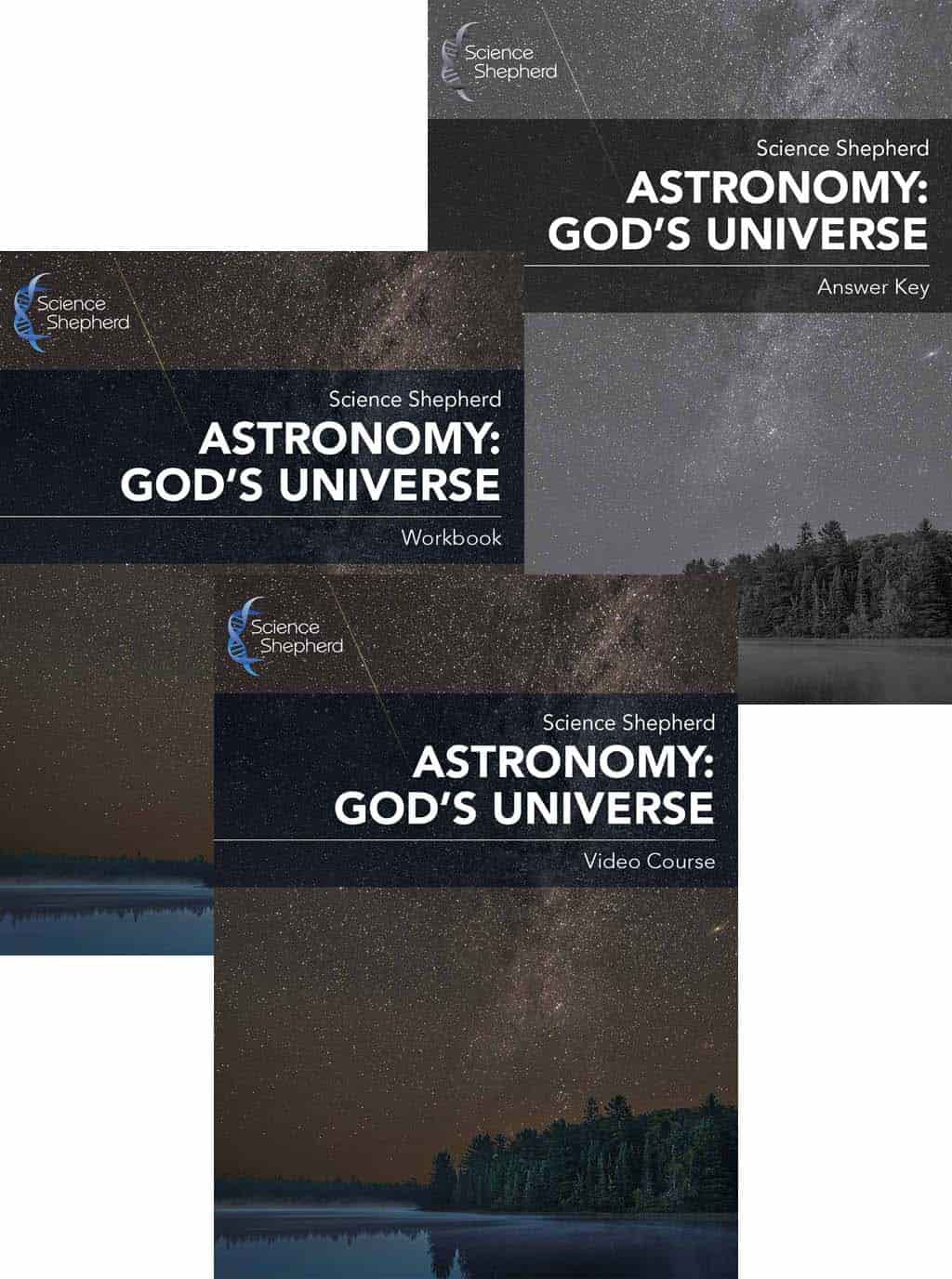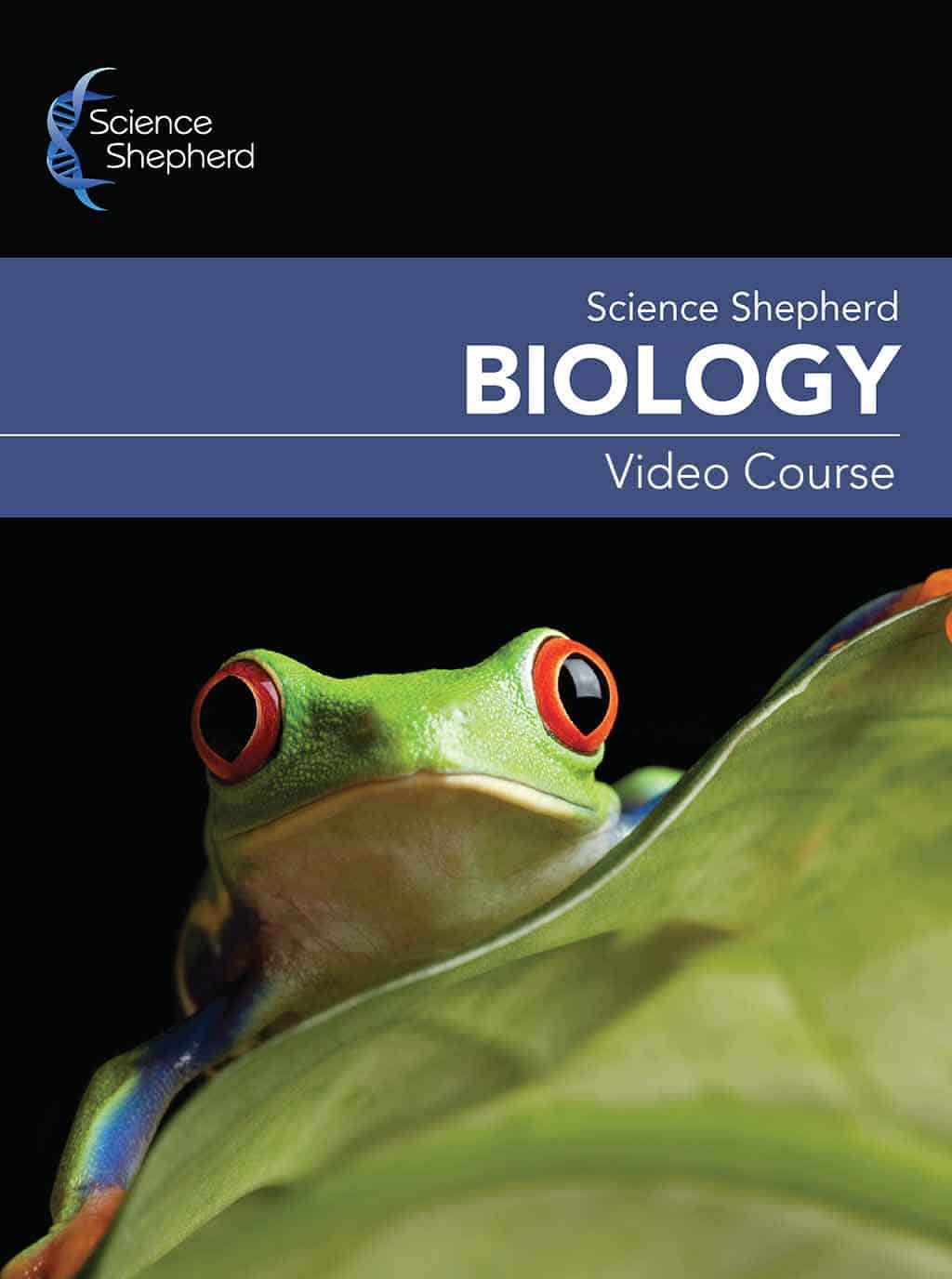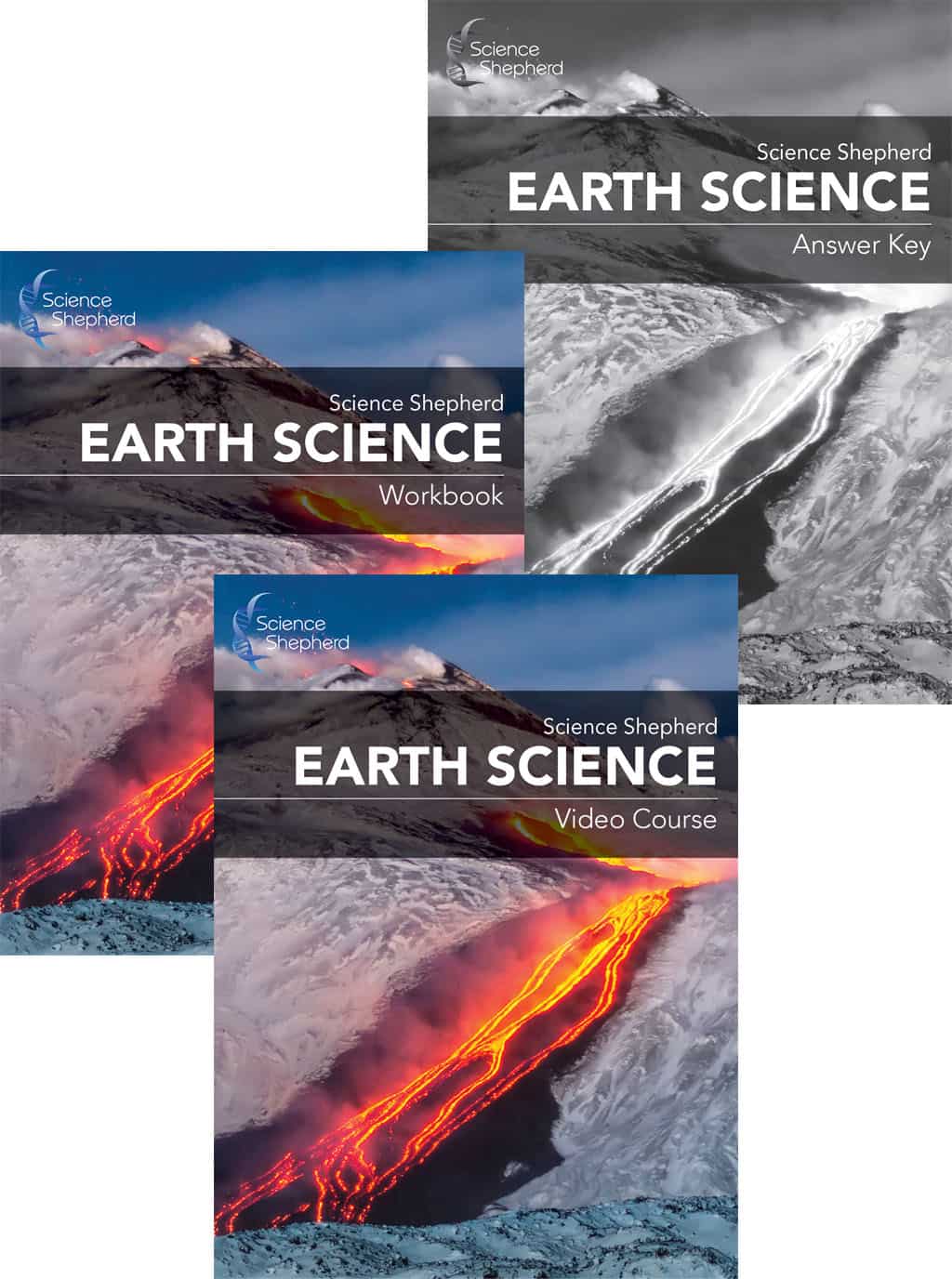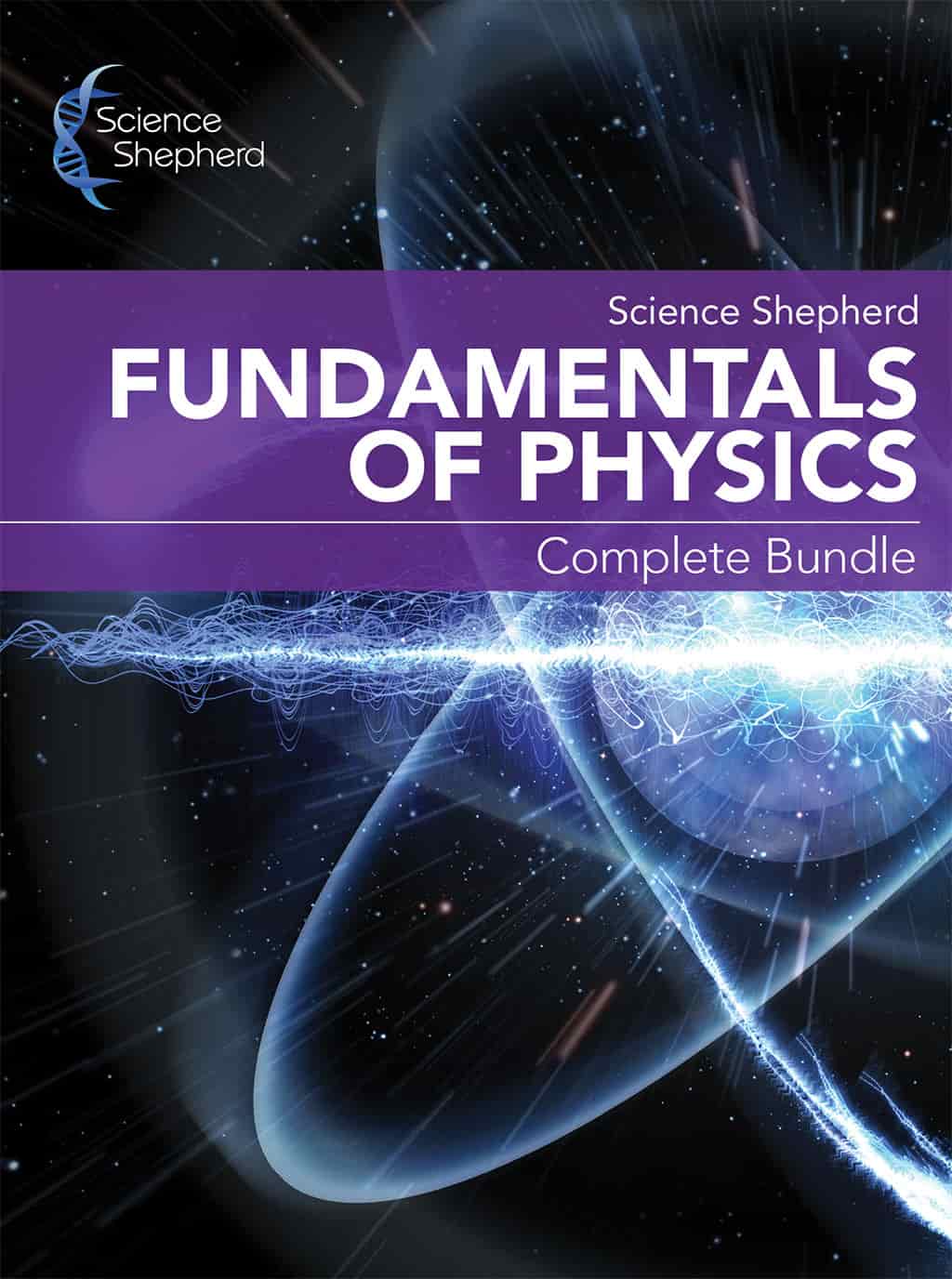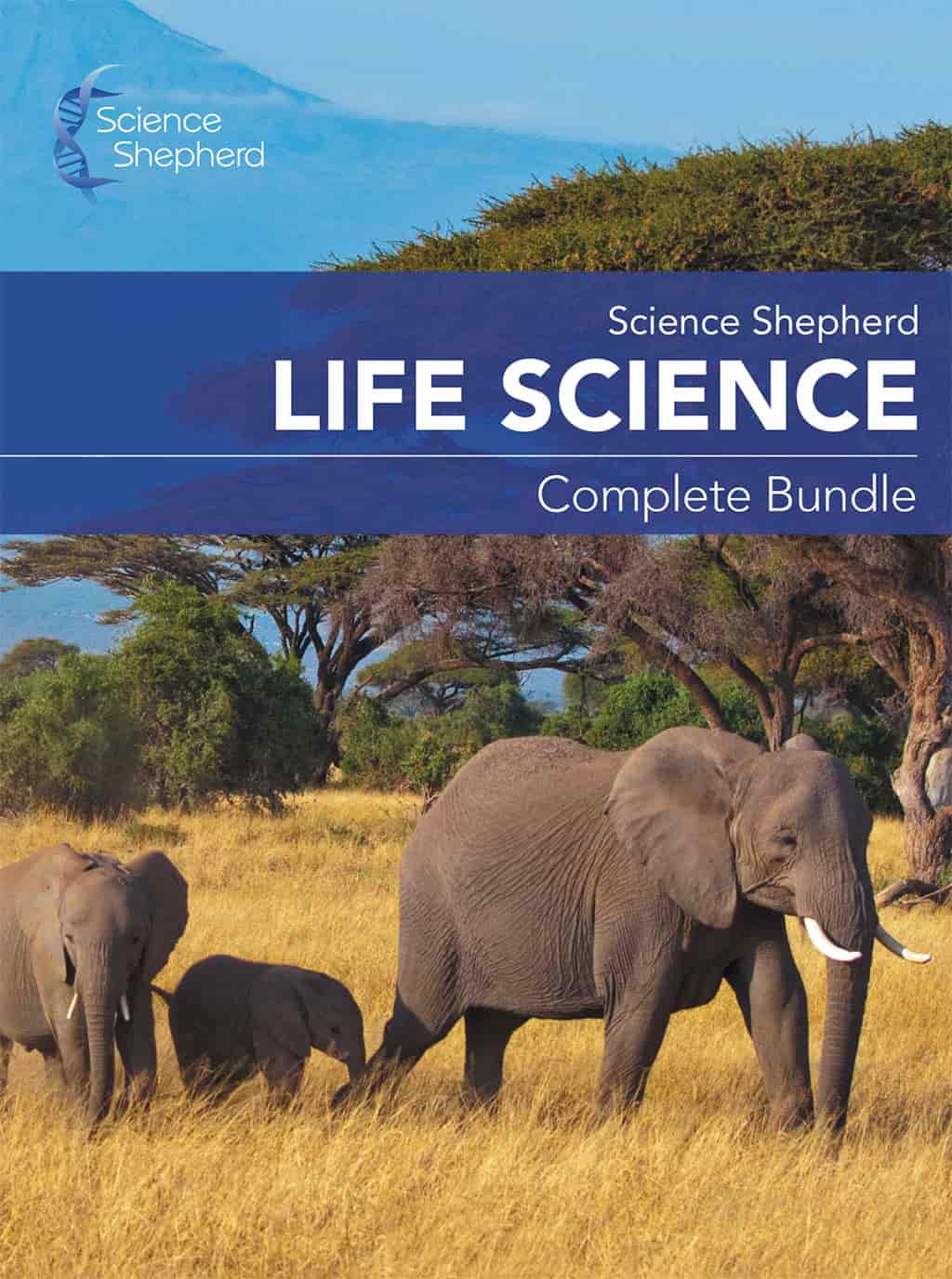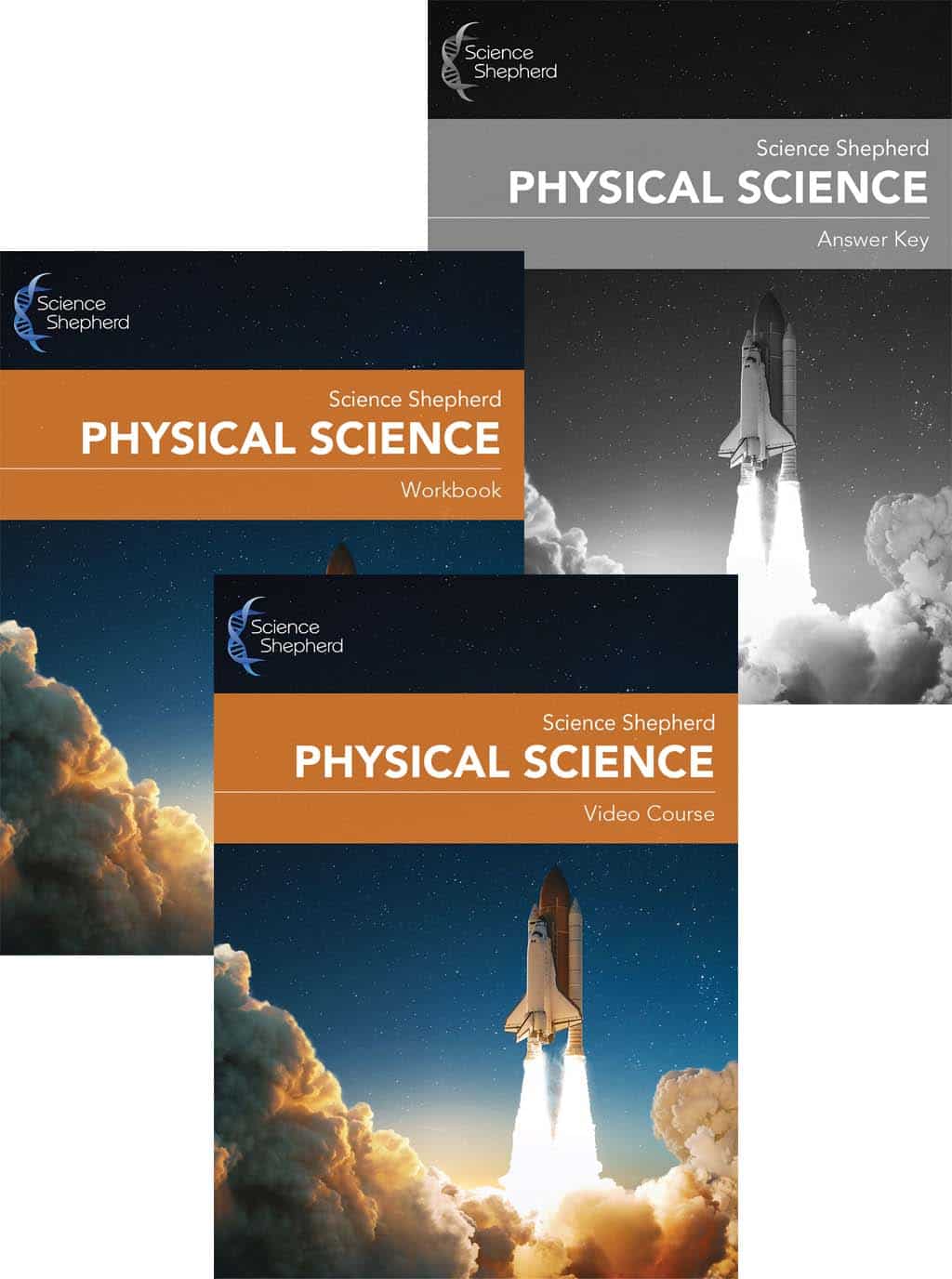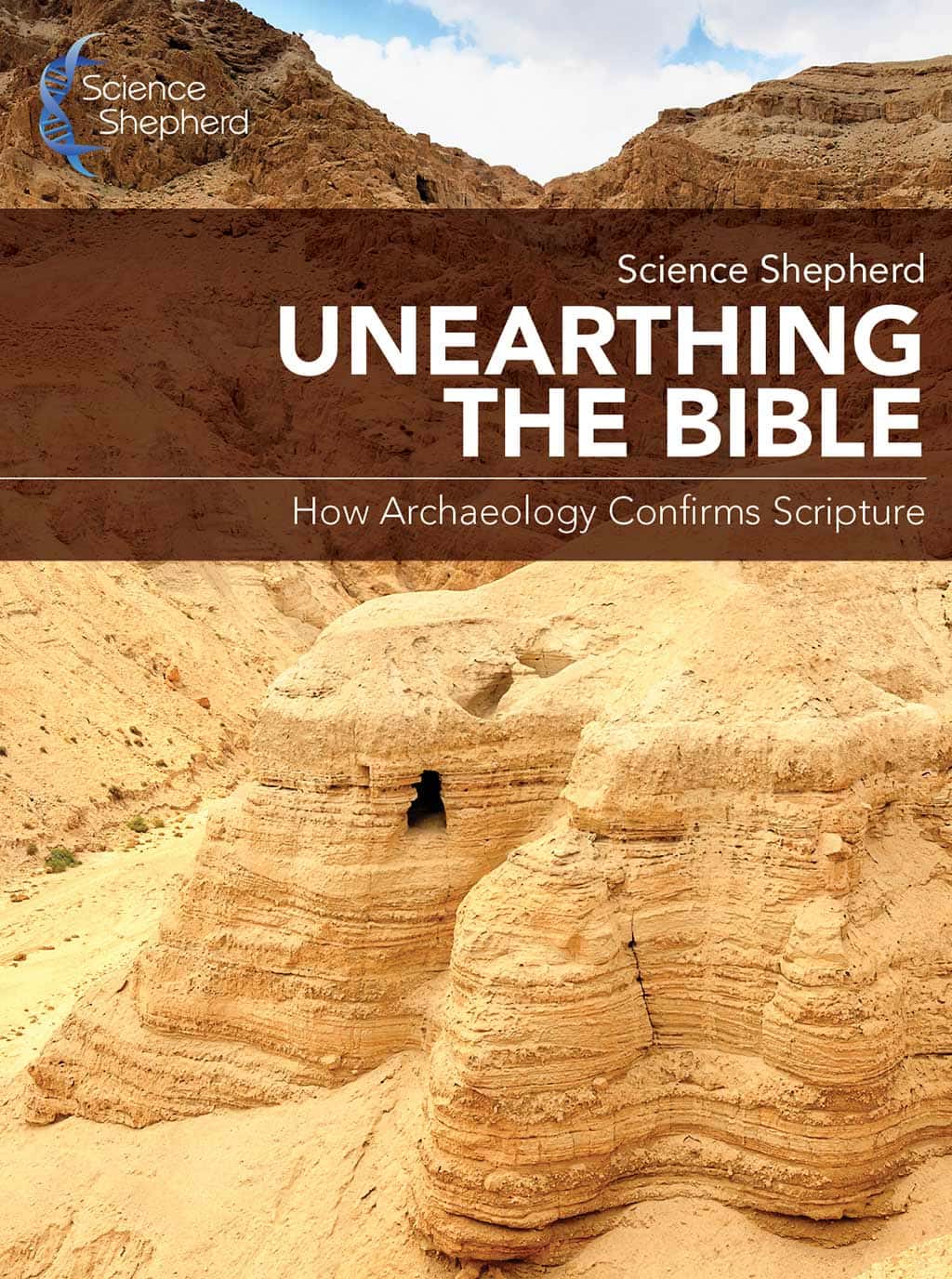Getting Started: Textbook + Video Course Homeschool Curricula
by Bill Hardin September 05, 2025 11 min read

How to Use a Science Shepherd Textbook + Video Course in Your Homeschool
“GULP!” It’s the middle school and high school years! There seems to be a lot more that goes into science curriculum all of a sudden. You’ve got a huge stack of Science Shepherd books on your counter but you’re not sure where to begin. Don’t panic, this guide is for you! Or, if you have not yet purchased a Science Shepherd course and are wondering how the material works together, this will be a helpful look into these courses. We’ll walk you through all of the material for our classes that include textbooks, where to find digital downloads and online streaming access, and how to use each learning resource in your homeschool.
This guide applies to our textbook + video lesson courses: Biology, Fundamentals of Chemistry, Fundamentals of Physics, and Life Science. For our video-based curricula, you can follow along with this guide.
Schedules
To start off, schedules for all of our textbook + video courses are printed in the front of each Answer Key & Parent Companion, and are available as PDF downloads either at scienceshepherd.com on the corresponding course and product pages – look for the heading “Additional Information” – or on the student portal. We’ll talk a bit more about the parent book and student portal below. These schedules are merely our recommended daily/weekly scheduling; feel free to modify and adjust them to fit your family’s homeschooling needs.
As presented, the schedules are broken into 1-week blocks with daily assignments. Each weekly block has a row labeled Textbook/Video/Workbook*, Lab Manual, Test Booklet. These rows will indicate which sections of the textbook/videos/workbook, lab, and/or test to complete on a given day. Review/study days are also indicated. For the Textbook/Video/Workbook row, the section numbering is taken from the Textbook. We’ll get into that below.
Now, let's review the material that might be included with your purchase. Keep in mind that the exact material and format of your specific order may vary.
*At this time, Biology does not have a Workbook.
Textbook
For our textbook + video lesson courses – Biology, Fundamentals of Chemistry, Fundamentals of Physics, and Life Science – we consider the Textbook to be the core material for the class. Each textbook presents all of the learning content needed to successfully complete the course. The general format for all of our textbooks is the same – each chapter begins with a brief preview, followed by the chapter content divided into numbered sections. To close the chapter, there are sections for key points, definitions, and study questions. These last three sections are great study resources (*hint*hint*).
It’s a good idea to flip through the textbook to familiarize yourself with the layout. Of note are the section numbers, which are referenced in the class schedule to indicate where to start/stop reading each day. Additionally, if using the course videos, each video lesson will reflect that same numbering as the section numbers in the textbook to make correlating them to the textbook easy. We’ll talk more about the videos now.
Video Course
For students who learn well from video format or those who need a little extra help understanding the textbook, video lessons are available for our textbook + video courses. While the video lessons are optional, they are also comprehensive, covering each course textbook in detail. For all of these courses, the video lessons are available via online streaming through our student portal, or as a DVD set for Biology and Life Science. If you purchased the DVDs, they should play in any DVD player or computer DVD drive - yep, those still do exist! - and are region free, so you should be able to watch them globally. We say should because we can’t test every DVD player/drive, but the DVDs are manufactured to be playable on all devices, worldwide.
Whether you are using the online streaming videos or the DVDs, you’ll notice that each video title includes the section numbers from the textbook that the video covers. This is to help you easily correlate the videos to the class schedule and textbook. As a further scheduling help, the videos on the student portal and the Life Science DVDs include the week/day numbers.
If you purchased the online streaming option, there are two different ways/paths you can receive your course access. If you are a family that is new to using our material, meaning this is your first online Science Shepherd course and you have not enrolled in any free previews, look for an email or two from us welcoming you to our student portal and/or stating that you are now enrolled in [insert name of video course]. This email will contain a link to set your password and login for the first time. Following that initial login, you’ll be able to visit courses.scienceshepherd.com directly to login.
If you are a returning family and have previously purchased an online course from us and/or have enrolled in one of our free previews, after you complete your purchase the new video course will automatically be added to your existing account on our student portal. You should receive an email confirming your enrollment in your new course, but can simply login to your existing account on our student portal at courses.scienceshepherd.com to get started, without needing to wait for that email.
Once you log in to the student portal, enter your new video course by clicking “Start Course” (by the way, this will automatically change to “Resume Course” once you start completing material), take a few minutes to explore the layout to get familiar with the left-hand menu (“hamburger” menu if using a mobile device) and video player. To progress into the main course content, you must visit the Creative Commons module and click “Mark Complete”. Take note that the online videos are presented according to the recommended course schedule, with the sections from the textbook that each lesson video covers shown in the video titles. Prompts for “offline” work like labs and tests are also included.
Critically important note: Our system automatically sets up online course access based upon the email address used to complete checkout, and does so within about 15 minutes of completing your purchase. If you have not received either/both of the emails discussed above within 15 minutes of completing your purchase, be sure to check your promotions/spam folders, and confirm that the email address you used during checkout was correct. If you still do not have a course access email after completing those steps, please contact us.
Do I have to use the textbook if I get the video course? Our general recommendation for these courses is to use the textbook. However, the videos are detailed enough that a student can learn all of the key course content from them, without the textbook. We have a more detailed answer/explanation as part of our FAQs.
I purchased the DVD set but received an email that I’ve been enrolled in something online. What’s that? The DVD sets for Biology and Life Science include access to the online chapter review quizzes. We’ll discuss those below.
Workbook
At this time, a workbook is not available for Biology.
Another resource that you may have received is a workbook, either as a spiral bound book or a PDF for you to download and print at home. If you purchased a workbook PDF, your order confirmation email will include a link to download that material. The download link will be towards the top of that email in red text. Alternatively, you can log in at account.scienceshepherd.com and access a download link through your order details there. Note that the “account” login is different from the video course access login discussed above.
Whether you purchased the PDF or spiral bound book, we recommend taking a few minutes to flip through it to see how it is laid out. The workbooks for our textbook + video curriculum include a “how to use this workbook” section with a few sample questions. Also note the information contained in the header for each class/lesson. The week and day numbers will correspond to the class schedule, each video in the student portal for the online videos or the DVD menus for Life Science, as well as the workbook answer key (see below) to help make following along easy.
Can I use the workbook with only the textbook, and not the videos? In short, yes. But it is important to realize that the workbooks were written to correspond most directly to the course videos. While the videos themselves teach through the course textbook – meaning the videos and textbook cover the same material – the explanations Dr. Hardin uses in the videos to teach or expound upon a concept from the textbook may differ from what is written in the textbook. This is intentional, so as to help a student better understand a concept from a slightly different perspective. Sometimes that’s all that’s needed for it to “click” with a student. So, if using the workbook with only textbook, the concepts reviewed in the workbook will be presented in the textbook, but the exact language, examples, and graphics may differ. This means that a student might have to work through a question a bit more to come to the right answer.
Test Booklet
Each of our textbook + video curriculum has a test booklet available. Each test is numbered to correspond to the class schedule, and reviews 2 or more chapters from the course textbook. Test booklets are available in softcover or a printable PDF. If you purchased the PDF version, you can access it via your order confirmation email or account.scienceshepherd.com, as described above.
Can my student complete the tests open-book? Absolutely! We are big proponents of open-books tests, but also recommend setting a time limit to taking the test. The goal of an open-book test is to learn how to search out some answers that a student isn’t certain about, not be able to look up the answer to every test question.
Lab Manual
For students interested in hands-on learning/reinforcement, or needing it to fulfill a lab credit, each of our textbook + video courses has a lab manual available that fully integrates with the textbook and videos. Performing the labs is optional; no required learning material is presented in the lab books, so students will not be “missing out” by skipping them. Each lab is numbered, with a corresponding entry in the class schedule. Answers for questions that appear in the lab manual are included in the back of the book (note that observation-based questions won’t have an answer; the “right” answer is whatever the student observes).
Lab Videos
For Biology, lab videos are available via online streaming access on our student portal or as a DVD. Note that the lab videos are included with the Biology Video Course (online videos and DVD). Each lab video is numbered to easily correspond to the Biology Lab Manual. If you purchased the Biology Video Course, the lab videos are presented alongside the lesson videos, where they would fall within our recommended schedule. For the video course DVD set, the labs are on a dedicated lab disc.
Each lab video, with the exception of lab 17, which doesn’t translate well to video, walks students through each lab from the Biology Lab Manual. For microscopy labs, what students should see through their microscope is shown on screen, and dissection labs show the actual dissection.
Can my student just watch the labs and not actually perform them? Yes, this is a perfectly valid way to complete the labs. In general, we still recommend completing the lab manual as best as possible, or at least some form of lab write-up. The only time we would not recommend this method is if your student is interested in a career in science, like a nurse, doctor, vet, etc. In that case, the hands-on experience will be critical.
Answer Key & Parent Companion
Perhaps the most helpful resource for parents that is available for our textbook + video courses is the Answer Key & Parent Companion. It is available in softcover or as a printable PDF, which is accessed as described above. If you received an Answer Key & Parent Companion, take a few minutes to read the Introduction, and flip through the book to glance at the four main sections:
- the class schedule,
- study question answers,
- test question answers,
- parent companion.
We’ve already touched on the class schedule a bit, but now is a good time to take a closer look at it, if you haven’t already. We’ll go over the other three sections now.
The study question answers and test answers sections are pretty straightforward. The study question answers correspond to the study questions section at the end of each chapter of the course textbook (note that there are no study questions for chapter 14 in Fundamentals of Chemistry and Fundamentals of Physics), not the online chapter review questions, which we’ll discuss in a bit. The test answers correspond to the respective test booklet.
The parent companion portion is the real meat of the Answer Key & Parent Companion. For each course, this section provides a brief review of the textbook, one section at a time. It distills a respective section into a few key points your student should know. Additionally, there is often a question or two you can ask your student for extra review of that section or to help ensure your student understands a given section. Using these questions is entirely optional.
Workbook Answer Key
The final book that you may have received is the workbook answer key, which is available in softcover or as a PDF. You can access the PDF as previously detailed. This book simply provides the answers to the workbook questions and is arranged according to the week/day layout of the workbook.
Online Chapter Review Quizzes
One last digital-only resource you may have received with your order is the online chapter review quizzes. Note that these are included with the purchase of the Biology Video Course (online streaming and DVD). The online quizzes are accessed via the student portal, which is accessed as detailed above. If you purchased the online video course, the quizzes will be presented where they fall within the course schedule. With a DVD purchase, access will be provided as a standalone “Biology Chapter Review” enrollment.
Each online quiz reviews one complete chapter from the Biology Textbook. The questions presented are similar to those in the “Study Question” section of the textbook, with some questions used in both formats, and are limited to true/false and multiple choice type answers. The online portal automatically marks each questions correct/wrong, and indicates which section(s) to review in the textbook for additional study. Each quiz can also be repeated an indefinite number of times.
Should my student complete both the online review quizzes and the textbook study questions? While there is some value to taking both formats, it is not necessary to do so. If using only one format, we recommend the textbook questions, as the short-answer style questions necessitate a more complete/thorough understanding of the material. But, which format is used, or if both are, is ultimately at your discretion.
Using Your Homeschool Science Resources
Now that you are familiar with the material you received for your course, you may be wondering what a day of science class should look like. In short, whatever works best for your family/student! In all seriousness, there’s no one “right” way to work through our textbook + video courses, but we’ll go over a few examples.
If using only the textbook, the main content for the day will be the assigned textbook reading. If using the workbook alongside it (see note above), your student can complete the workbook questions as he/she reads, or after completing the reading as a way to review / study what has been presented for the day. Once the textbook (and workbook) work is complete, your student can move on to a lab, if assigned.
If using the video course alongside the textbook, your student can complete the scheduled reading and then watch the corresponding lesson video, or vice versa. Encourage your student to try both ways to see which method works best!
When using the workbook with the video course (with or without the textbook), your student can follow along with the video, completing the daily workbook questions as the video lesson plays, or, if you would like more of a “how well were you paying attention in class?” approach, your student can watch the entire lesson video, and then complete the workbook. The method you choose for your family should be what works best for you. If you have multiple students in the same course, you might even have one student watch the video and then complete the workbook, while another student completes the workbook as the video plays.
What about pausing, rewinding, or rewatching the videos? You can, and should, do all three, as needed!
That sums up all of the material for our video-based courses! We hope this helps you get started quickly and enjoy a great year of science!
Until next time,
Science Shepherd
Sign-Up Today!
Subscribe for the latest news and receive 10% off and a FREE resource!
Recent Articles
10% Off Your Next Order
Subscribe to our newsletter and we'll send you a code for 10% off an order
plus a free download of 5 Scientific Ways Your Kids Can Defend Their Faith.


